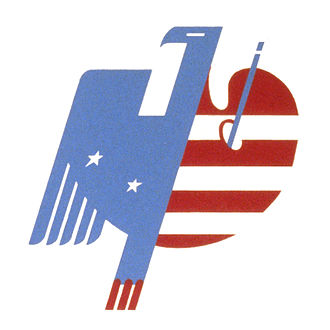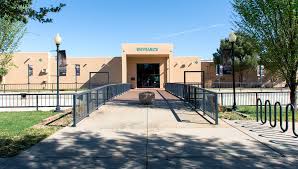Like last month, my dissertation work of late has focused on processing archival documents. While my work in July concentrated on the Walker Art Center, this month I’ve been taking a broader look at the Community Art Center Project itself.

I started the month by wrapping up the Walker Art Center archives. Since its first director, Daniel S. Defenbacher, was also the national supervisor of the Community Art Center Project before he relocated to Minneapolis, the center contains some of his FAP-related correspondence from the 1930s. Many of these letters were addressed to the Minneapolis Arts Council and concerned the development of the Walker Art Center, but there are also field reports, letters from other art center directors, and ephemera addressing the project more broadly. These documents reminded me that, as significant as the Walker Art Center is, it was still part of a larger network of art centers, each with its own strengths, weaknesses, and concerns.
From there, I started going through a repository I’ve been meaning to investigate for a long time: the Holger Cahill papers at the Archives of American Art. A protege of John Cotton Dana (among other things, check out his biography here), Cahill was the Director of the Federal Art Project. He initially conceptualized the Community Art Center Project while traveling through the South collecting folk art for Abby Aldrich Rockefeller, and the program would first develop in southern states before expanding nationally. While Cahill wasn’t as involved in the centers’ day-to-day operations as Defenbacher, he still oversaw the initiative, and as a result, there are a lot of papers in his files pertaining to it. Luckily for me, the microfilm versions of Cahill’s papers are digitized, so I’ve been able to begin this work from my house.

I started by going through the finding aid and noting the sections that address community art centers. I then visited each of these subsections and downloaded the documents I thought were relevant. During this first foray into the papers, I’ve omitted the correspondence since it’s so extensive and covers a variety of topics. Once I’ve read through the documents I’ve already downloaded I’ll go back and peruse the correspondence individually and download any letters that address art centers. As with the Walker’s files, I’ve organized these documents into Tropy, noting the reel and frame numbers for future citation purposes.
I’m still working through the papers I’ve downloaded, but what I’ve already read has proven immensely useful and interesting. One booklet, an official WPA circular on Community Art Centers, offers an illuminating look at how the FAP envisioned art centers as institutions, from how they should be organized, to the kinds of activities they should run. It’s less an accurate rendering of art centers as they actually operated than what the FAP imagined they ought to be like, and offers a contrast to the narratives that emerge in the field reports. The field reports, in turn, start delving into the individual tensions and issues that affected specific art centers, from the lack of available staff to host classes, to racial tensions, to accusations of Communism among staff members (According to Defenbacher at least, they weren’t Communists, but there were strikes happening in the host city at the time and residents were paranoid over organized labor). Some of the episodes are amusing, others are striking reminders that the FAP and the local communities they served had differing values and objectives. Arguably the most visceral example was the closure of an extension gallery in North Carolina intended for Black visitors because the Board of Trustees at the primary art center disapproved of it. The Community Art Center Project has, understandably, been critiqued for maintaining rather than challenging segregationist infrastructures by opening segregated centers, with exceptions like the The People’s Art Center in St Louis or the Harlem Art Center. Yet incidents like the ones I’ve been reading about remind me that the FAP and the communities they approached often had different visions for their centers in terms of activities and audiences, and access for all wasn’t always the top priority.
Yet what has surprised me the most so far is the emotional labor of this archival work. When I was working in museums full-time, I would get frustrated with the disagreements that occurred between staff members, board members, community members, and so on. As far as I was concerned, I was there to research the art, not get involved in squabbles. And yet, now that I’m in a position where I can research, what do I focus on but the tensions among personnel?

Yet concentrating on these moments of disagreement, of disparity between the ideals as laid out in WPA circulars and speeches and the challenges as described in field reports means that, willingly or not, I’m remembering tensions I’ve experienced in my professional life. At one point my emotional reactions became so strong that I had to step away from the documents for a while. The experience emphasized the importance of making space for my feelings as I continue researching and recognizing that I am not a neutral stakeholder in this work.
There’s still much work to be done regarding the art centers. After I finish this batch of the Cahill documents, I’ll go through his correspondence. I’ll also need to peruse newspaper archives, since I know that art centers frequently worked with them to promote events and other activities. I also need to think about ways to get outside the archive’s perspective, because the perspectives I have been reading about are largely federal ones.
But so far, what I’ve been reading has been very interesting, and after years of preparation, I’m excited to finally be delving into the art centers in earnest.